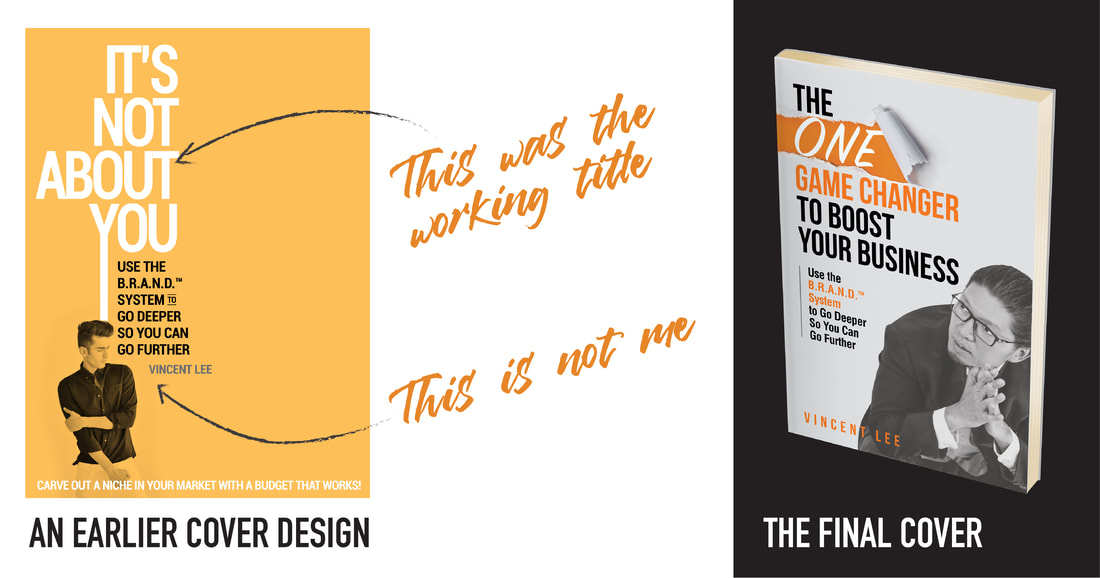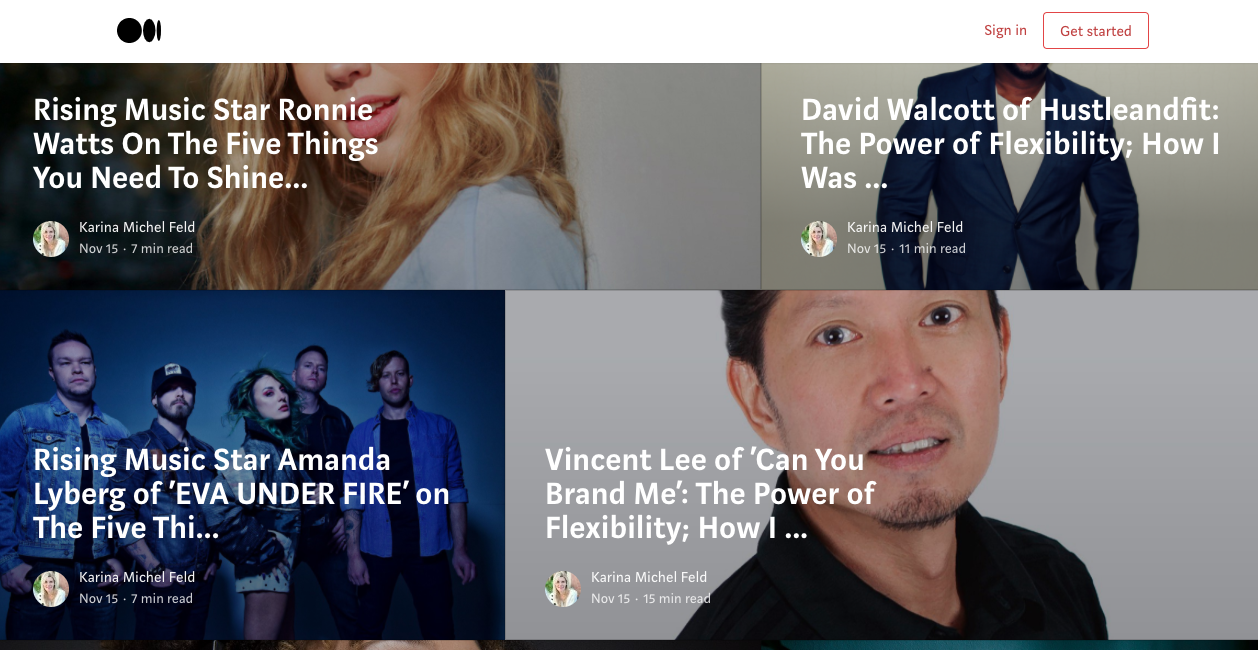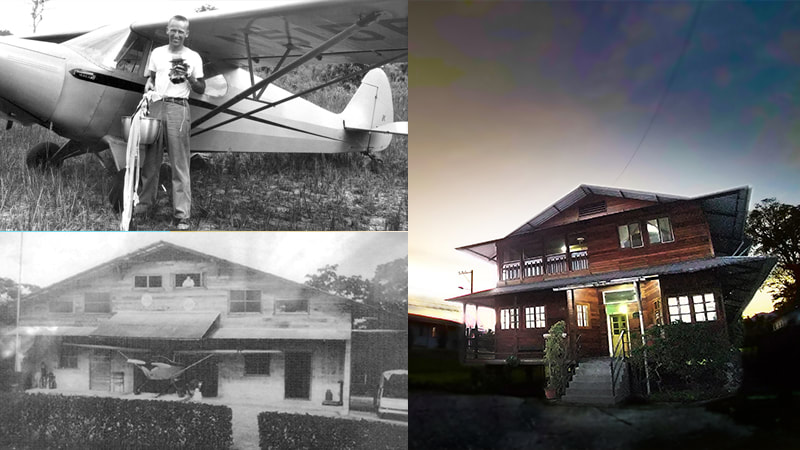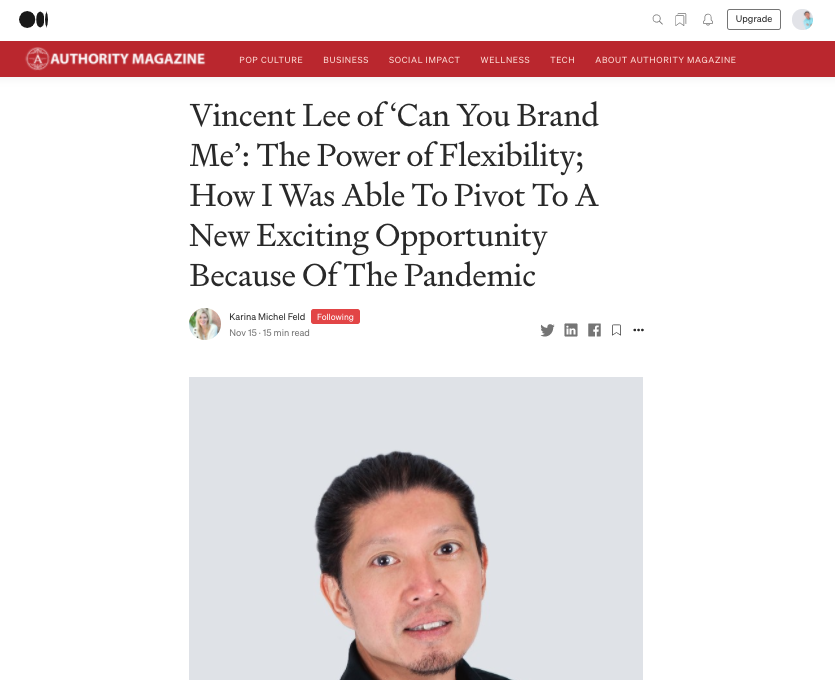DEMYSTIFYING BRANDING WITH five key questionsBrand development along with the nuts-&-bolts of starting and running a business are critical knowledge any business owners should have under their tool belt. As part of a 12-week entrepreneurship academy organized by the OIC Business Academy (OIC-BA) funded by the OKC Black Justice Fund, two sessions starting March 12 will be devoted to demystifying the often misunderstood concept of branding. Branding is an expensive and tedious process and Vincent Lee, one of the facilitators at the OIC-BA, aims to empower start-up and small business owners with five key questions to get branding done right from the get-go. “I am looking forward to meeting the many aspiring Black/African American business leaders who want to do their part in making an impact in the society,” Vincent said. CLICK FOR THE ARTICLE IN THE OKLAHOMAN "Black Oklahomans may apply for entrepreneurship academy in January" Vincent Lee. Author, Brand Strategist, and Coach For the past 20 years, Vincent has straddled life and work between Singapore and Oklahoma City. Along the way, he has shown clients on several continents how they can become the master of their brand and move their company into space traditionally taken by huge corporations. As an author of an upcoming book “One Game Changer to Boost Your Business. Use the B.R.A.N.D.™ System to Go Deeper so can you Go Further”, Vincent continues to be a brand evangelist and advocate for his clients, while also devoting his time towards inspiring young minds to uncover and define their brand in life. MEDIA CONTACT: Vincent Lee [email protected] 405-596-3451 PIVOTING DURING THE PANDEMICStraddling Singapore and the U.S. for the last twenty years, two major events with global impact bookmarked my journey as a Singaporean living in Oklahoma. The first was the September 11 attacks that almost hindered my return to the U.S. to complete my college education. The second was when coronavirus invaded Asia during my yearly visit to the land of the Crazy Rich Asians. Having survived three career-shaping employment as an immigrant seeking permanency in the U.S., the pandemic challenged the journey I thought I was on as a brand strategist and designer. COVID-19 asked me with a sneer, “So you think you can continue supporting your family doing what you are so passionate about now?” I have always been passionate about helping small business owners since they don’t always have the budget to hire advertising and marketing agencies for brand development services. Clients’ budget cuts during the pandemic put a dent in my plan. While my revenue as a solopreneur was affected, coronavirus has not taken away my time, my knowledge, and thankfully, my health. The formulation of a book about branding was thus conceived in December 2019. Writing the book has not only allowed me to fine-tune the methodology I used with past clients, it began a personal journey of revisiting my own story and telling them with pixels and words. I have in the last eleven months gained greater clarity about my identity and brand, while being able to connect with business owners and leaders as I interviewed them for content and to learn from their personal and business stories. The Power of FlexibilityIn an interview by Karina Michel Feld of Authority Magazine, I was asked several thought-provoking questions as part of a series called "How I Was Able to Pivot to a New Exciting Opportunity because of the Pandemic". There are two particular questions that resonated with what I believe is my core value; one of five things I talk about in the upcoming book. Here are the excerpt from Karina's interview: AUTHORITY MAGAZINE: Is there a particular book, podcast, or film that made a significant impact on you? Can you share a story or explain why it resonated with you so much? It’s the film “Into the Wild”, adapted from a book of the same title. It tells the story of Christopher McCandless who abandoned all his possessions, burned the cash he had on him, hitchhiked across America, and found momentary contentment with isolation and living off the land. He kept a diary of his thoughts as he survived for more than 110 days on rice, edible plants, and any wild animals he could hunt with a .22-caliber rifle. While there are varying theories as to the cause of his death in the back country near Denali in 1992, what struck me is one of Christopher’s diary entries, “Happiness is only real when shared.” Christopher took two years to reach that revelation but did not get to live out the happiness he sought for. Carine McCandless later revealed that her brother’s behavior and sudden departure stemmed from domestic violence and abuse while growing up. I watched that film in Singapore while visiting my parents right when COVID-19 hit Asia. I recalled sitting in silence as the film credits rolled over my reflection on the TV screen. My childhood pales in comparison to the McCandless but memories of the fear of being hurt by loan sharks flooded my mind. There was no memory of happiness during that time in my life and I remember hating my father. The decision to leave Singapore in 2000 to finish my last year in college as a full-time student was partly triggered by a desire to find my own happiness. I am thankful to be able to say this, that happiness has and will continue to be real because of the people I am sharing it with, which includes my parents. AUTHORITY MAGAZINE: If you could inspire a movement that would bring the most amount of good to the most amount of people, what would that be? Many people are trying to find happiness in the wrong places; from buying and accumulating material things to seeking acceptance or affection from every person they meet. Uncovering one’s personal brand is, at the end of the day, all about discovering one’s unique path to happiness. I want to motivate and walk alongside someone to identify their ultimate purpose and value in life, which will help them align the necessary relationships (eg. family, friends, co-workers, mentors, customers, clients) and behaviors (eg. career, hobby, processes, habits) in the same direction. And as they seek alignment between their purpose, values, relationships, and behaviors, they can bring along with them another person and do the same. Happiness is not the destination, it is the journey. And that journey should be a fun road trip; one that we call life! HAPPINESS IS ONLY REAL WHEN SHAREDChristopher, also known by the pseudonym Alexander Supertramp, lived for two years under his new identity and realized that the happiness he was seeking during his wild escapade could only be real when shared with someone. His entry in the diary will forever be engraved in my mind as I considered what drives me as I seek happiness: What drives me is being able to go through the valleys and byways with someone... when we can be vulnerable and yet, not be afraid because we have a road trip buddy. What drives me is being able to share the peaks and highways with someone... when we can celebrate together, even if it means simply enjoying the wind in our face and the beauty before our eyes in silence. Published with permission from Authority Magazine and Thrive Global.
CLICK HERE FOR THE FULL INTERVIEW FIVE THINGS I WISH SOMEONE TOLD ME BEFORE I BECOME A SOLOPRENEUR
It's been over a year since I was in the "middle of the world" on an initial brand analysis exercise for ADSE. An interview by Authority Magazine got me going down memory lane as I recounted the "Aha moment" that revealed a passion in me to teach as an author and brand strategist. It was two months before COVID-19 turn the world upside down and a localized, but equally devastating situation was turning the world of Ecuadorians upside down. President Lenin Moreno had just decided to remove a four-decade-old fuel subsidies, which crippled the nation straddling the equator as protestors block roads and highways. UNDERSTANDING THE ROOTSDuring the time spent with ADSE and the community she is in, we uncovered three core values that I believe stem from the legacy of five missionaries; Nate Saint, Jim Elliot, Peter Fleming, Ed McCully, and Roger Youderian. Their martyrdom in 1956 in the hands of the Waodani tribe triggered a wave of evangelistic efforts into the Amazon jungles. The Mission Aviation Fellowship, through Nate Saint as her first missionary in Shell, had been bringing the Gospel and life-sustaining resources into the jungle through flights, communications, and other logistics since 1948. The work of supporting missionaries, local churches, and villages continues with ADSE since 1986. While the pandemic may have affected and slowed down the organization, I believe that the work God started has not ceased. My AHA MOMENTWorking with ADSE during the civil unrest has been an eye-opener. As I walked the line dividing different cultures, I learn the importance of contextualizing the universal concept of branding for local relevancy. I love the process of learning about ADSE and figuring out the best way to communicate the discovery and strategy to the leaders and staff who are mostly from a different culture. I have always enjoyed working one-on-one with business owners as we develop or redefine their brands. Pivoting my approach, many thanks to the pandemic, I want to extend my reach through coaching groups within companies (beyond just the owners) and helping them understand that a powerful and memorable brand is built from within and as a team. My book, "The ONE Game Changer To Boost Your Business. Use the B.R.A.N.D.™ System to go Deeper so you can go Further" (due to be available early next year) along with online courses (ie. B.R.A.N.D. Ed) will be a couple of ways I hope to achieve that goal. More importantly, the underlying drive for the work and ministry of ADSE has reminded me of what God has called all His children to do. Whether we are flying planes, developing brands, or formulating marketing strategies, it is ultimately about making Him known. And that work is never finished until Christ comes again. November 15, 2020: Karina Michel Feld of Authority Magazine interviewed me as part of a series called "How I Was Able to Pivot to a New Exciting Opportunity because of the Pandemic". The same interview was also featured on Thrive Global on December 3, 2020. CLICK HERE FOR THE FULL INTERVIEW |
Details
|











 RSS Feed
RSS Feed